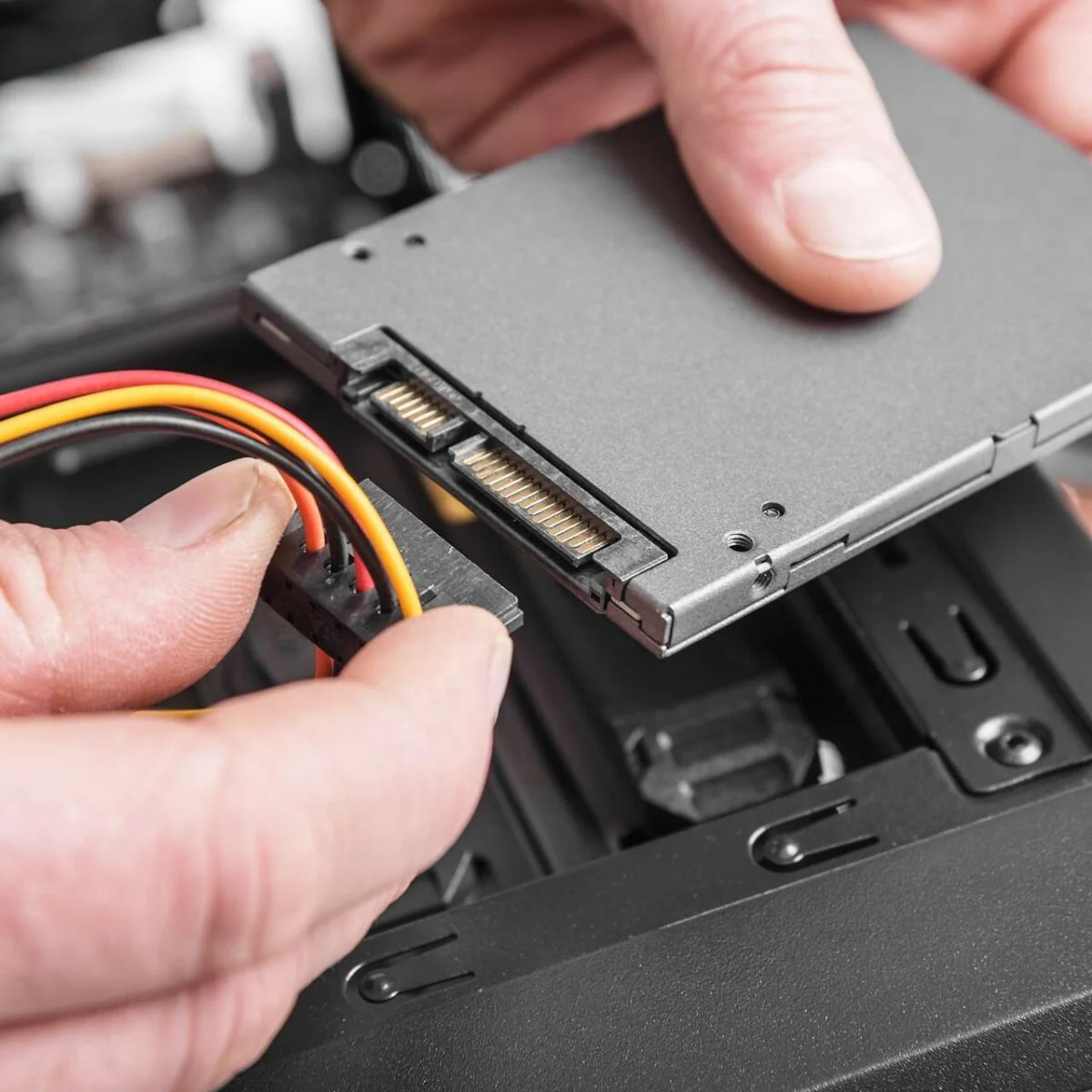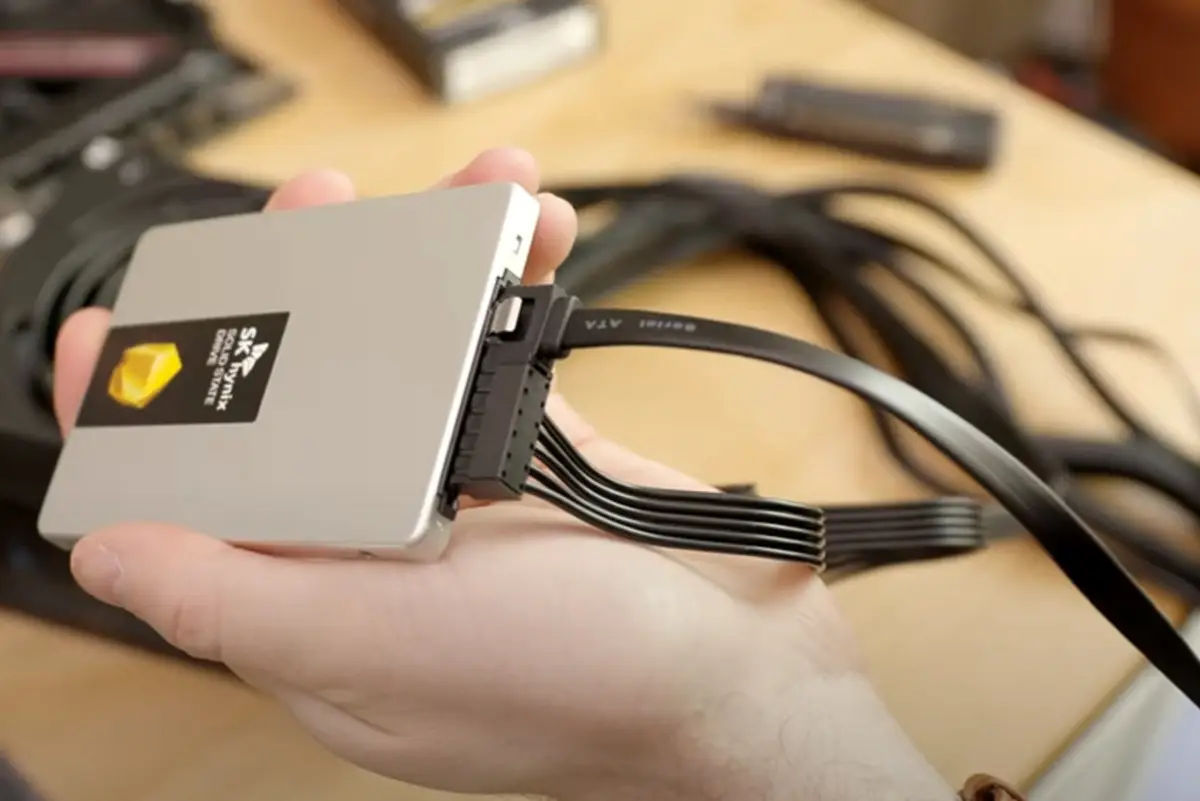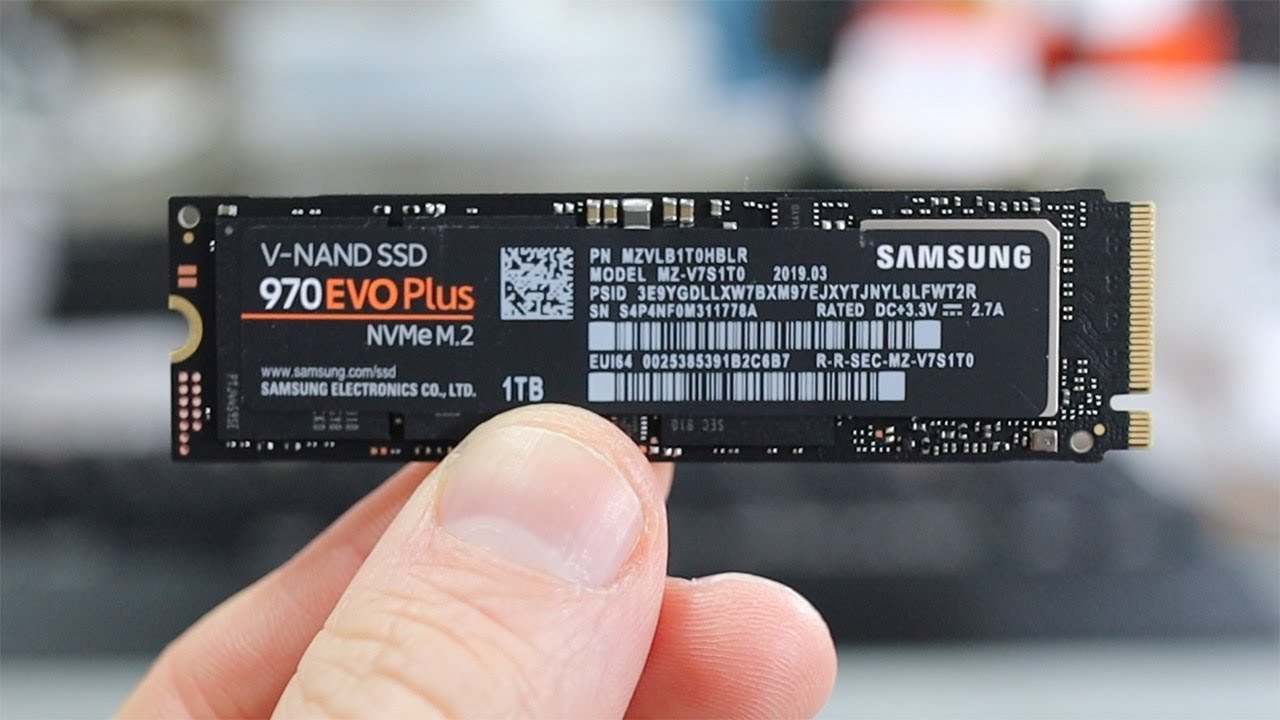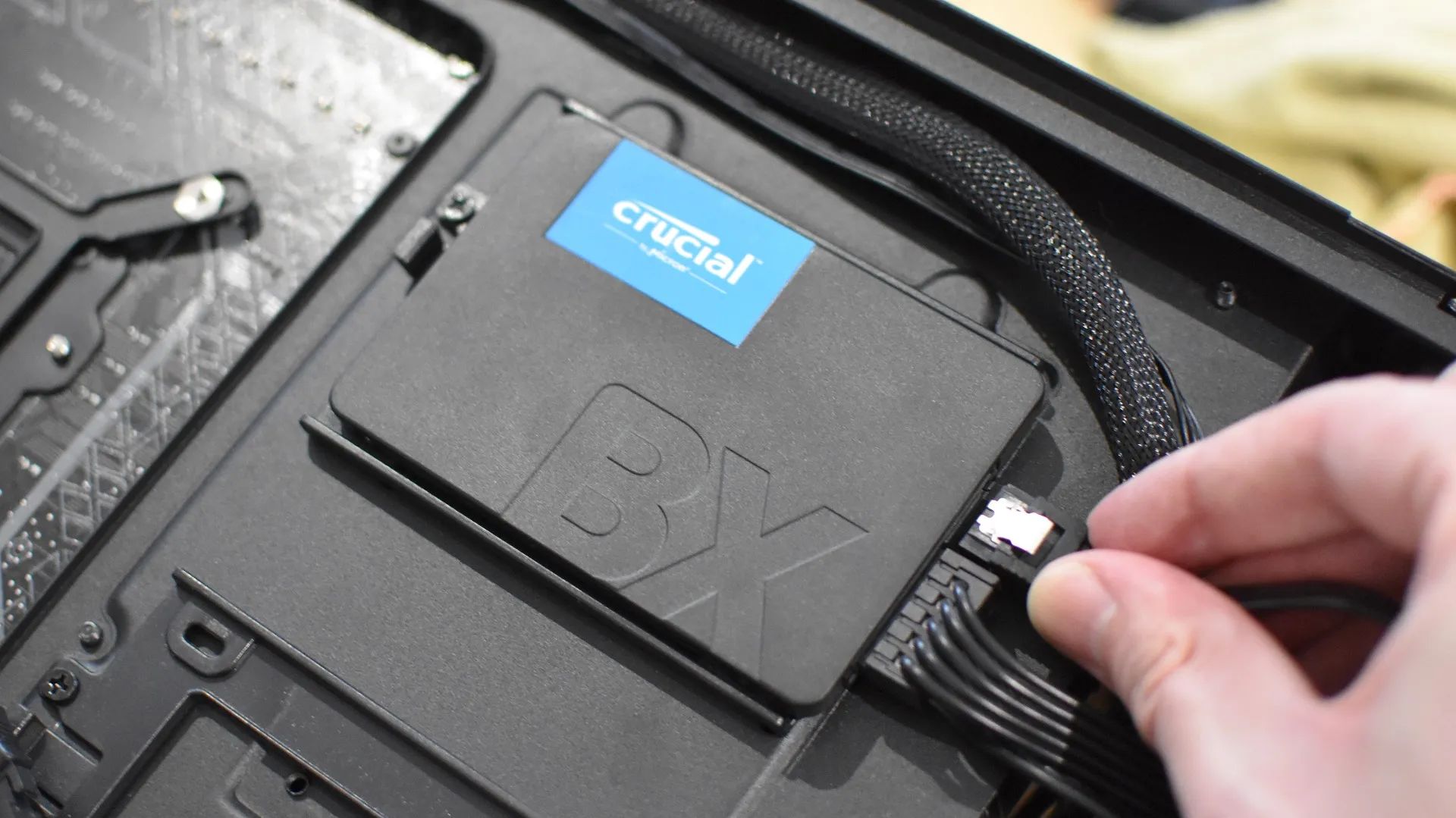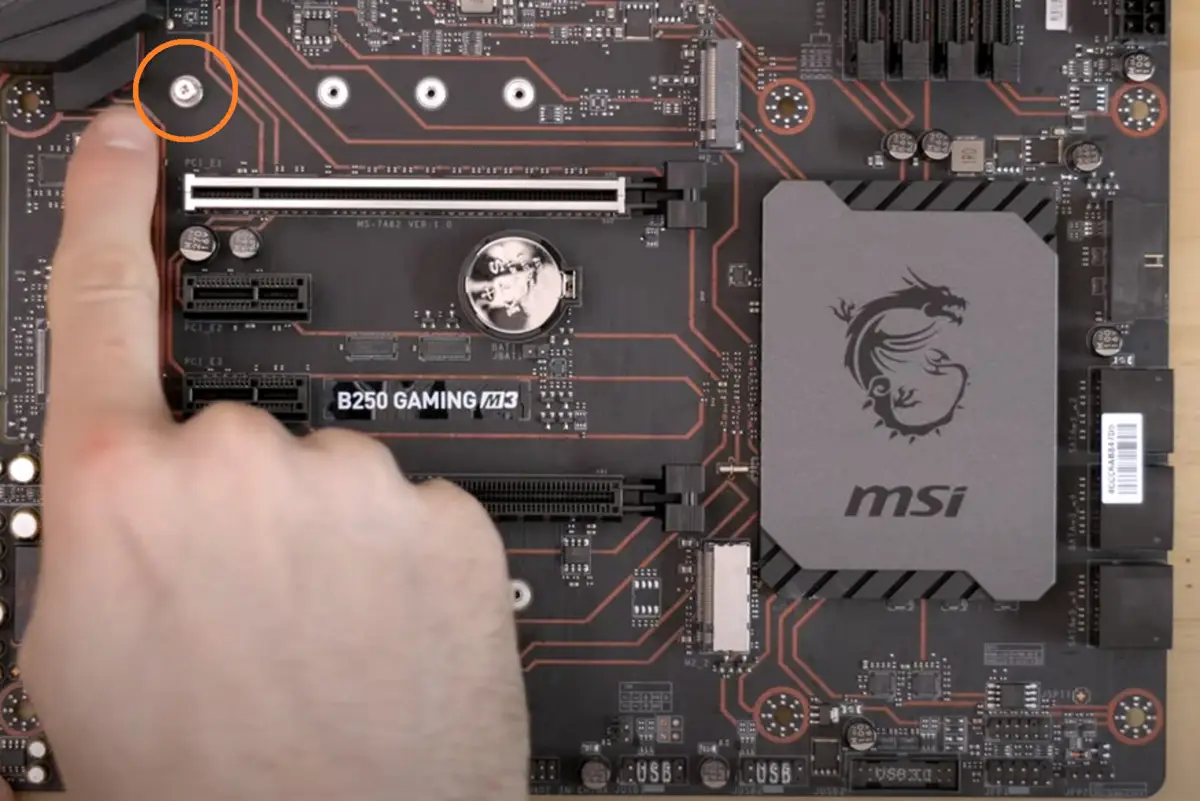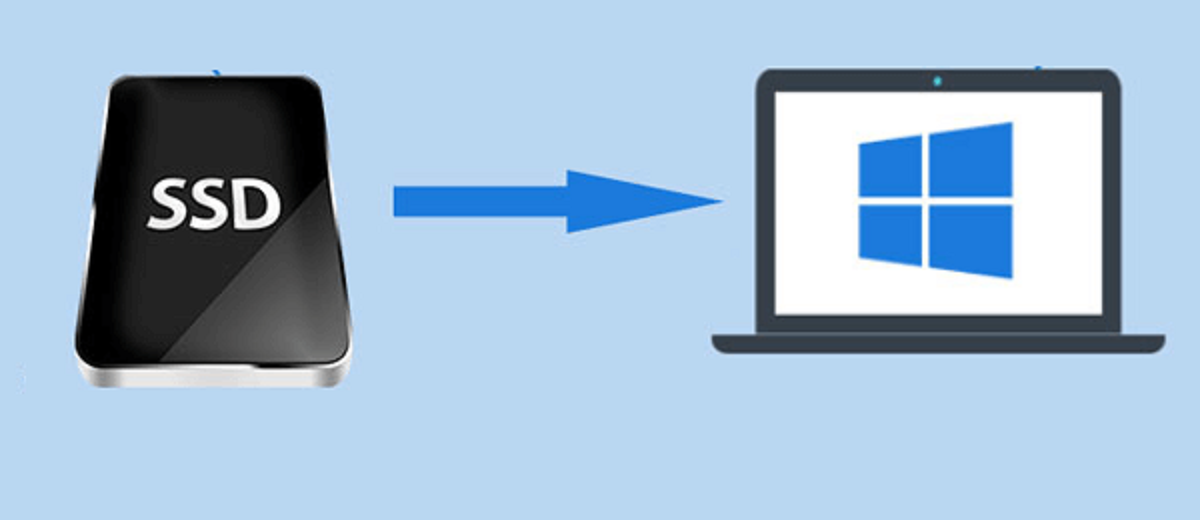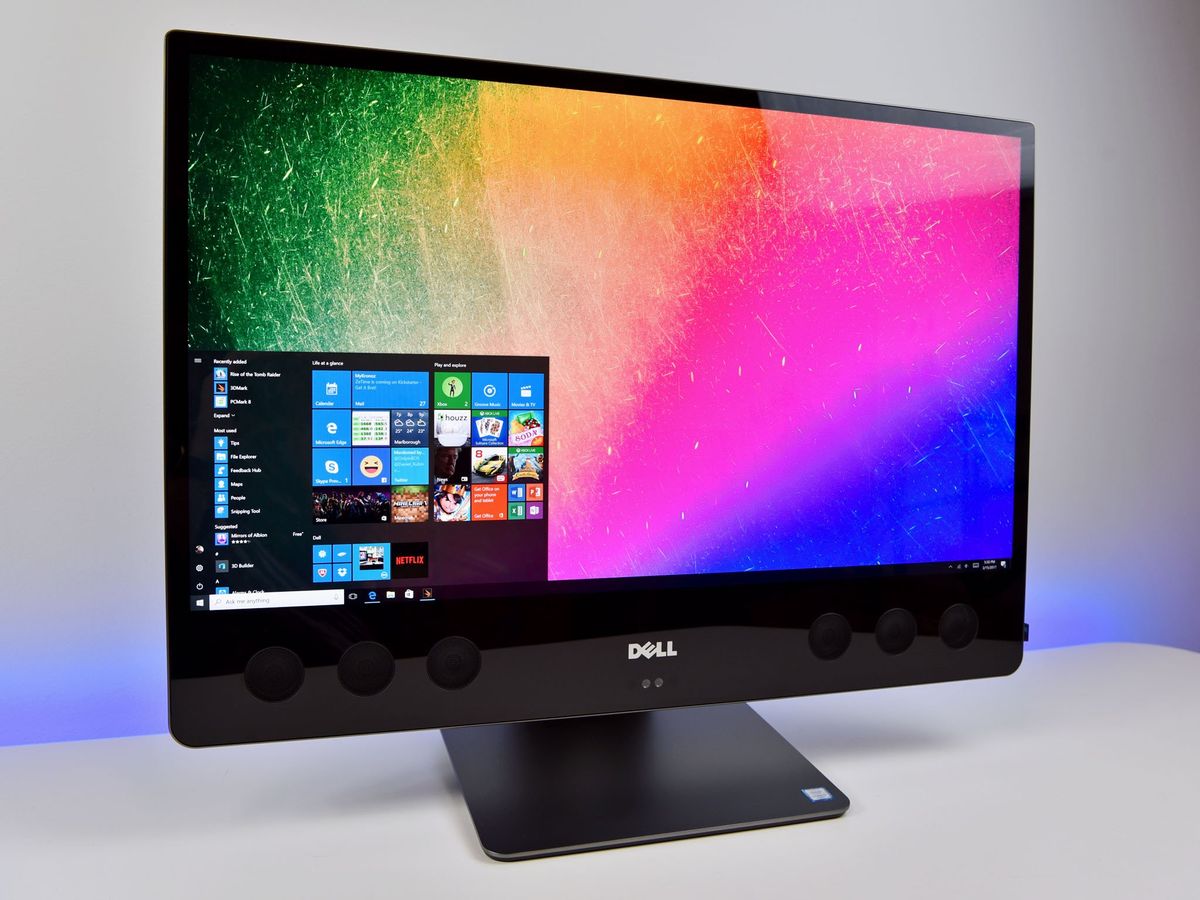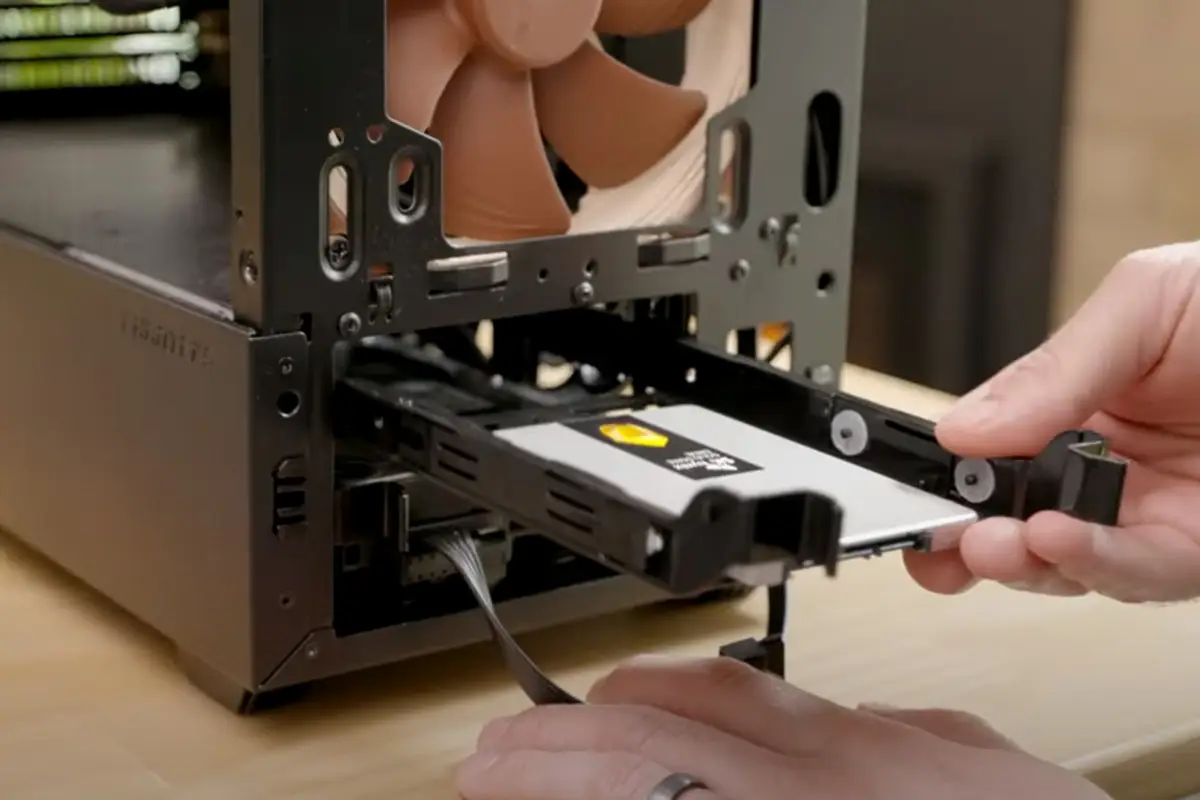Introduction
Welcome to the exciting world of solid-state drives (SSDs) for PCs! In this age of fast-paced technological advancements, SSDs have revolutionized the way we store and access data on our computers. Whether you’re a casual user or a hardcore gamer, understanding the benefits and functionality of SSDs is essential for optimizing your PC’s performance.
So, what exactly is an SSD? Simply put, it is a type of storage device that uses flash memory to store data. Unlike traditional hard disk drives (HDDs) that rely on spinning platters and mechanical read/write heads, SSDs use integrated circuits to store and retrieve information quickly. This difference in technology leads to a multitude of advantages, making SSDs the preferred choice for many PC enthusiasts.
In this article, we will explore the advantages of using an SSD for your PC, delve into how SSDs work, discuss the different types of SSDs available, and provide valuable tips for maximizing their performance. Additionally, we will compare SSDs to traditional hard drives, addressing some common queries that users may have when considering the switch.
Whether you’re planning to upgrade your existing system or build a new PC, understanding the benefits and features of an SSD will help you make an informed decision. So, let’s dive in and discover the amazing world of SSDs and how they can take your PC experience to the next level!
What is an SSD?
An SSD, short for solid-state drive, is a storage device that has gained widespread popularity in the world of computers. Unlike traditional hard disk drives (HDD), which use mechanical components to read and write data on spinning platters, SSDs utilize flash memory technology to store and retrieve data quickly and efficiently.
At its core, an SSD is comprised of memory chips that store data electronically. These chips are organized into a controller, which manages the data flow and ensures smooth operation. This fundamental difference in technology brings a multitude of advantages over HDDs.
One of the key advantages of SSDs is their remarkable speed. Since data is stored in flash memory, which has no moving parts, the access times and transfer speeds are significantly faster compared to HDDs. This means that your system can boot up quickly, applications can launch instantaneously, and large files can be transferred in a fraction of the time.
In addition to speed, SSDs also excel in terms of durability. HDDs are prone to damage and failure due to their mechanical nature. On the other hand, SSDs have no moving parts, making them more resistant to shock and vibrations. This makes them ideal for laptops or other portable devices that may be subjected to rough handling.
Furthermore, SSDs are energy efficient, consuming less power compared to HDDs. They generate less heat, which not only helps prolong the lifespan of components but also contributes to a quieter overall system operation. This efficiency translates to longer battery life for laptops and can help reduce the electricity bill.
With the growing demand for faster, more reliable storage solutions, SSDs have become increasingly affordable and accessible. They are available in a wide range of capacities, from a few hundred gigabytes to multiple terabytes, catering to the needs of different users, whether it’s for everyday tasks, gaming, content creation, or professional applications.
In summary, an SSD is a revolutionary storage device that offers remarkable speed, durability, energy efficiency, and various capacity options. It represents a significant upgrade over traditional HDDs and is essential for anyone looking to enhance their PC’s performance and overall user experience.
Advantages of Using an SSD
The use of solid-state drives (SSDs) in PCs has become increasingly popular due to the numerous advantages they offer over traditional hard disk drives (HDDs). Let’s explore the key benefits of using an SSD for your computer.
- Speed: One of the most significant advantages of SSDs is their lightning-fast speed. With no moving parts involved, SSDs can access and retrieve data much quicker than HDDs. This translates into faster boot times, reduced application loading times, and improved overall system responsiveness.
- Reliability and Durability: SSDs are more reliable and durable compared to HDDs. As they have no mechanical components, they are less susceptible to damage from drops or vibrations. This makes them ideal for use in portable devices such as laptops, where durability is crucial.
- Energy Efficiency: SSDs are more energy-efficient than HDDs. Due to their lack of spinning platters and mechanical components, they consume less power, resulting in lower energy costs and longer battery life for laptops.
- No Noise: Since SSDs have no moving parts, they operate silently. This is a stark contrast to HDDs, which often produce noise due to the mechanical movements of their read/write heads and spinning platters.
- Compact Size: SSDs are typically smaller and lighter than traditional HDDs. This makes them perfect for small form factor PCs and laptops, where space is limited.
- Improved File Transfer and Load Times: With faster read and write speeds, SSDs excel in loading large files and transferring data. Tasks such as video editing, file compression, and gaming benefit greatly from the improved performance of SSDs.
- Less Heat Generation: SSDs generate less heat compared to HDDs, contributing to improved system cooling. This can lead to a longer lifespan for other components in your computer, as excessive heat can damage sensitive hardware.
- Longevity and Endurance: SSDs have a longer lifespan than HDDs and can withstand a larger number of read and write cycles. This means they can endure heavy usage for extended periods without experiencing performance degradation.
- No Fragmentation Issues: Unlike HDDs, SSDs do not require periodic defragmentation. This is because the data is not stored physically but rather electronically in NAND flash chips, allowing for quicker data access and less performance degradation over time.
Overall, the advantages of using an SSD for your PC are clear. They offer a significant performance boost, improved reliability, energy efficiency, compact size, and enhanced durability. Whether you’re a casual user or a power user, investing in an SSD is a wise choice to take your computing experience to new heights.
How Does an SSD Work?
To understand how a solid-state drive (SSD) works, let’s take a closer look at its internal components and the process it uses to store and retrieve data.
At the heart of an SSD are NAND flash memory chips. These chips are organized into a grid-like structure, with each cell capable of storing multiple bits of data. The data is stored in these cells by applying electrical charges to specific transistors within the NAND flash memory.
In an SSD, the flash memory cells are divided into pages and blocks. A page is the smallest unit that can be read from or written to, usually ranging from 4KB to 16KB in size. Multiple pages are grouped together to form a block, usually 128 pages or more.
When a computer sends a read request to the SSD, the controller identifies the specific location of the data and retrieves it by accessing the appropriate pages and blocks. This process of retrieving data is much faster in SSDs compared to traditional hard disk drives (HDDs) because there are no mechanical parts involved. The electrical charge stored in the cells is accessed directly, resulting in quicker read speeds.
When it comes to writing data, SSDs have a unique process called the “erase-before-write” mechanism. Unlike HDDs, which can overwrite data directly, SSDs must first erase data from the cells before writing new data. This is because writing new data to a cell that already contains data can cause interference and data corruption. Although this process may seem slower, SSDs make up for it with their overall faster performance during read and write operations.
In order to optimize the lifespan of the SSD and prevent wear on specific cells, SSD controllers employ a technique called wear leveling. This ensures that data is written evenly across the entire NAND flash memory, distributing the workload and preventing specific cells from being overused.
To manage the data stored on an SSD efficiently, the controller also utilizes a technique called garbage collection. When data is deleted or moved, empty pages are left behind. Garbage collection identifies these empty pages and consolidates the data, freeing up space and preventing fragmentation.
In summary, an SSD works by using NAND flash memory chips to store and retrieve data. The controller manages the writing, reading, erasing, wear leveling, and garbage collection processes, ensuring the SSD operates efficiently and maximizes its lifespan. With no moving parts involved, SSDs offer faster read and write speeds, improved reliability, and enhanced overall performance compared to HDDs.
Types of SSDs
When it comes to solid-state drives (SSDs), there are a few different types available in the market. Understanding the different types will allow you to choose the SSD that best meets your specific needs and requirements. Let’s explore the common types of SSDs:
- SATA SSDs: SATA (Serial ATA) SSDs are the most widely used and popular type of SSDs. They connect to the computer’s motherboard using the SATA interface, just like traditional hard disk drives (HDDs). SATA SSDs come in both 2.5-inch and M.2 form factors and provide significant performance improvements over HDDs with faster read/write speeds.
- NVMe SSDs: NVMe (Non-Volatile Memory Express) SSDs are the latest and fastest type of SSDs available. They connect to the computer’s motherboard using the NVMe interface, which utilizes the PCIe (Peripheral Component Interconnect Express) bus. NVMe SSDs offer incredibly high speeds and reduced latency, making them ideal for demanding applications, gaming, and professional workloads.
- PCIe SSDs: PCIe SSDs are similar to NVMe SSDs in terms of their connection interface. They also utilize the PCIe bus, but they may not have the same level of performance as NVMe SSDs. PCIe SSDs come in different form factors, such as add-in cards or U.2 drives, and offer faster speeds compared to SATA SSDs.
- External SSDs: External SSDs are portable storage devices that connect to your computer via USB or Thunderbolt interfaces. They offer the advantage of easy plug-and-play compatibility with different devices, making them convenient for transferring and storing data on the go. External SSDs come in various capacities and are a popular choice for backup and additional storage needs.
- Enterprise SSDs: Enterprise SSDs are designed for use in servers, data centers, and high-performance computing environments. These SSDs are built to handle heavy workloads and deliver exceptional reliability and endurance. Enterprise SSDs often come with advanced features like power loss protection and higher capacities to meet the demanding needs of enterprise-level applications.
It’s important to consider the type of SSD that is compatible with your system and aligns with your usage requirements. SATA SSDs offer a cost-effective solution with significant performance improvements over traditional HDDs. NVMe SSDs provide next-level performance and are well-suited for gamers, professionals, and anyone seeking the fastest storage solution. PCIe SSDs offer faster speeds and are ideal for users who require high-performance storage. External SSDs provide portable and convenient storage options, while enterprise SSDs cater to the needs of demanding server and data center environments.
Each type of SSD has its own advantages and considerations, so it’s recommended to research and evaluate your specific needs before making a decision. Regardless of the type of SSD you choose, upgrading from a traditional HDD to an SSD will undoubtedly offer a significant boost in performance and enhance your computing experience.
Factors to Consider When Buying an SSD
When it comes to purchasing a solid-state drive (SSD) for your PC, there are several factors to consider to ensure you select the right SSD that meets your needs and offers the best performance. Let’s explore these important factors:
- Capacity: Determine the amount of storage you require. SSDs are available in a range of capacities, from smaller drives of 120GB or 250GB, all the way up to larger drives of 1TB or even 2TB. Consider your storage needs based on your usage patterns, such as gaming, multimedia editing, or general everyday tasks.
- Interface: Consider the interface that your computer supports. The most common interfaces for SSDs are SATA and NVMe. SATA SSDs are backward compatible with older systems and offer decent performance. NVMe SSDs, on the other hand, provide lightning-fast speeds and are ideal for newer systems with NVMe support.
- Form Factor: Determine the available space in your PC for installing the SSD. Common form factors include 2.5-inch, M.2, and add-in card. Ensure that the chosen form factor is compatible with your PC’s storage slots and connectors.
- Performance: Consider the performance factors that matter to you. Look for SSDs with high read and write speeds, as this will directly impact how fast your system boots and how quickly applications or games load. Check for the SSD’s advertised performance specifications, such as sequential read/write speeds and random IOPS (Input/Output Operations Per Second).
- Endurance and Reliability: Look for SSDs with good endurance ratings, represented by Total Bytes Written (TBW) or Drive Writes Per Day (DWPD). A higher endurance rating ensures the SSD can handle frequent read and write operations without a significant decrease in performance or lifespan. Additionally, consider brand reputation and customer reviews for reliability assurance.
- Price: Consider your budget and the price-to-performance ratio of SSDs. Prices can vary depending on capacity, performance, and brand. It’s important to strike a balance between your budget and the SSD’s capabilities.
- Warranty: Check the warranty offered by the SSD manufacturer. Most reputable SSDs come with warranties ranging from 3 to 5 years, providing peace of mind knowing that you are covered in case of any potential defects or failures.
- Compatibility: Ensure that the SSD is compatible with your operating system and motherboard. Check for compatibility with Windows, macOS, or Linux systems, and ensure that your motherboard supports the specific interface (SATA or NVMe) of the SSD.
- Reviews and Recommendations: Read reviews and seek recommendations from trusted sources or fellow PC enthusiasts. Learning from others’ experiences can provide valuable insight into the performance, reliability, and compatibility of different SSD models.
By taking these factors into consideration, you can make an informed decision when purchasing an SSD and ensure that it not only meets your performance requirements but also offers excellent reliability and value for money. Investing in a quality SSD will significantly enhance your PC’s performance and provide a seamless storage experience.
Installing an SSD in your PC
Installing a solid-state drive (SSD) in your PC can greatly enhance its performance and provide faster data storage. While the process may differ slightly depending on your specific system configuration, the general steps for installing an SSD are as follows:
- Choose the right SSD: Select an SSD that matches your PC’s interface and form factor (e.g., SATA or NVMe, 2.5-inch or M.2). Ensure that the capacity meets your storage needs and budget.
- Back up your data: Before you begin, it’s always a good practice to back up your important data to avoid any potential loss or complications during the installation process.
- Power off your PC: Shut down your computer and unplug it from the power source. This will prevent any electrical accidents or damage to your PC during the installation process.
- Open your PC’s case: Depending on your PC’s design, you may need to remove the side panel or access a specific compartment to reach the storage slots. Consult your PC’s manual or manufacturer’s website for detailed instructions on opening the case.
- Locate the storage slots: Identify the storage slots where the SSD will be installed. These slots are usually located near the SATA ports on the motherboard for 2.5-inch SSDs or on the motherboard itself for M.2 SSDs.
- Insert the SSD: For a 2.5-inch SSD, connect one end of a SATA data cable to the SSD and the other end to an available SATA port on the motherboard. Then, connect the SSD to the power supply using a SATA power cable. If you’re installing an M.2 SSD, align the notches on the SSD with the corresponding slot on the motherboard and gently insert it at a 30-degree angle. Apply gentle pressure until the SSD is securely in place.
- Secure the SSD: If necessary, use the screws provided with your SSD or the motherboard to secure the SSD in its designated slot. Ensure that it is firmly fixed and aligned properly.
- Close your PC’s case: Carefully put back the side panel or close the case of your PC, ensuring that it is properly aligned and secured.
- Power on your PC: Plug your PC back into the power source and turn it on. The system will recognize the newly installed SSD, but you may need to configure the boot order in the BIOS to prioritize the SSD as the primary boot device.
- Format and partition the SSD: Once your PC boots up, you may need to format and partition the SSD. This can be done through the Disk Management tool in Windows or the Disk Utility tool in macOS. Follow the on-screen prompts to format the SSD and assign drive letters or partitions as desired.
- Restore your data: Finally, restore your backed-up data to the SSD and ensure that everything is functioning correctly. You can copy your files or use disk cloning software to transfer your existing OS and data from your previous drive to the new SSD if desired.
It’s important to note that these steps provide a general guideline for installing an SSD in a PC, but the exact process may vary depending on your specific hardware configuration. Always refer to your PC’s manual or the manufacturer’s website for detailed instructions tailored to your system.
By following these steps and taking necessary precautions, you can successfully install an SSD in your PC and enjoy faster boot times, improved application loading speeds, and enhanced overall system performance.
Tips for Maximizing SSD Performance
Maximizing the performance of your solid-state drive (SSD) is key to harnessing its full potential and ensuring optimal speed and efficiency. Here are some tips to help you get the most out of your SSD:
- Enable TRIM: TRIM is a command that helps optimize SSD performance by allowing the operating system to inform the SSD which blocks of data are no longer in use. Enabling TRIM ensures that the SSD can efficiently manage and organize its storage, leading to improved performance over time.
- Update your firmware: Regularly check for firmware updates for your SSD from the manufacturer’s website. Firmware updates often include performance enhancements and bug fixes that can improve the overall functionality and speed of your SSD.
- Avoid filling the SSD to max capacity: Keep some free space on your SSD. As an SSD gets filled to near maximum capacity, its performance can start to decline. Aim to leave at least 10-20% of the SSD’s total capacity free for optimal performance and to allow for efficient wear leveling and garbage collection.
- Disable unnecessary background processes: Some programs and processes can continuously write data to your SSD, causing unnecessary wear and affecting performance. Disable or limit background processes or applications that are not essential to improve both SSD performance and lifespan.
- Adjust power settings: In your computer’s power settings, choose the high-performance mode or a mode that enables the maximum performance of your SSD. This ensures that the SSD operates at its peak performance level in terms of read and write speeds.
- Use the latest drivers and software: Keep your SSD drivers and related software up to date. SSD manufacturers often release driver updates and optimization tools that can enhance performance and compatibility with the latest operating systems.
- Minimize unnecessary read/write operations: Unnecessary read and write operations can contribute to SSD wear and reduce overall performance. Avoid excessive file transfers, frequent defragmentation, or unnecessary temporary files that can put unnecessary strain on the SSD.
- Consider overprovisioning: Overprovisioning involves setting aside a specific amount of unallocated space on the SSD, which helps improve performance and endurance. Allocating around 10% of the SSD’s total capacity for overprovisioning can yield significant benefits in terms of speed and longevity.
- Regularly clean up and optimize your SSD: Use tools like the built-in disk cleanup utility in Windows or third-party SSD optimization software to remove unnecessary files, temporary files, and outdated data. Regularly running these cleanup and optimization tasks can help maintain SSD performance over time.
- Monitor SSD health: Keep an eye on your SSD’s health and performance by using the manufacturer’s diagnostic tools or third-party software. Monitoring the health status and identifying any potential issues proactively allows for timely action and helps maintain the SSD’s performance and longevity.
By following these tips, you can optimize the performance of your SSD and ensure that you’re getting the most out of your investment. Remember, an SSD can provide significant speed and performance benefits, but it’s important to take appropriate steps to maintain and maximize its efficiency.
Comparing SSDs to Traditional Hard Drives
When it comes to storage options for your computer, solid-state drives (SSDs) and traditional hard disk drives (HDDs) are the two main choices available. Let’s compare these two technologies to understand their differences and advantages:
Speed and Performance: One of the most significant advantages of SSDs over HDDs is their speed. SSDs use flash memory to store and retrieve data, resulting in faster read and write speeds. This translates into quicker boot times, reduced application loading times, and improved overall system responsiveness. In contrast, HDDs rely on spinning platters and mechanical read/write heads, making them slower in comparison.
Durability and Reliability: SSDs have a clear advantage in terms of durability. Since they have no moving parts, they are more resistant to shock, impact, and vibrations. This makes SSDs less prone to physical damage and data loss, making them ideal for portable devices. HDDs, on the other hand, are susceptible to damage due to their mechanical nature.
Energy Efficiency: SSDs are more energy-efficient than HDDs. With no spinning platters or moving components, SSDs consume less power, resulting in lower energy costs and longer battery life for laptops. HDDs, due to their mechanical nature, require more power to operate and generate more heat, leading to higher energy consumption.
Noise Level: SSDs operate silently. With no moving parts, they do not produce any noise during operation. HDDs, on the other hand, can be audible due to the spinning of the platters and the movement of the read/write heads, resulting in mechanical noise.
Storage Capacity: HDDs traditionally offer larger storage capacities at a lower cost per gigabyte compared to SSDs. While SSDs have become more affordable, HDDs still excel in terms of sheer storage space. However, SSDs are available in a wide range of capacities and can meet the needs of most users, from 250GB for basic storage to multiple terabytes for high-end requirements.
Form Factor and Size: SSDs are generally smaller and lighter in size compared to HDDs. This makes them ideal for devices with limited space, such as slim laptops or compact desktop builds. HDDs, with their larger mechanical components, are bulkier and may require additional physical space.
Fragmentation and Maintenance: SSDs do not suffer from file fragmentation, unlike HDDs. This means that data storage and retrieval on SSDs are not affected by fragmented files, resulting in consistent performance. Additionally, SSDs do not require periodic disk defragmentation, which is essential for maintaining HDD performance.
Cost: The cost per gigabyte of storage for SSDs has reduced significantly over the years, but HDDs still offer a lower cost per gigabyte. However, considering the performance benefits and increasing affordability of SSDs, the cost difference is becoming less significant.
Overall, SSDs offer faster speeds, improved durability, energy efficiency, and compact size when compared to traditional HDDs. While HDDs still have an edge in terms of storage capacity and cost per gigabyte, the advantages of SSDs make them a preferred choice for many users seeking enhanced performance and reliability.
Frequently Asked Questions about SSDs
As solid-state drives (SSDs) continue to gain popularity, there are several common questions that arise regarding their features, functionality, and usage. Here are some frequently asked questions about SSDs:
- Are SSDs compatible with my computer? In general, SSDs are compatible with most desktop and laptop computers. They use standard interfaces such as SATA and NVMe, which are widely supported. It’s important to check your computer’s specifications to ensure compatibility with the specific interface and form factor of the SSD you plan to install.
- Do SSDs require special drivers? While some SSDs may come with specific drivers or software utilities, most modern operating systems, such as Windows, macOS, and Linux, have built-in drivers that can properly detect and utilize the features of SSDs. However, it’s recommended to periodically check for firmware updates from the manufacturer to ensure optimal performance and compatibility.
- Can I replace my HDD with an SSD? Yes, you can replace your HDD with an SSD. SSDs can be a direct replacement for traditional hard drives, offering faster performance and better reliability. Ensure that the SSD is compatible with your computer’s interface (SATA or NVMe) and form factor (2.5-inch or M.2) before making the switch.
- How do I transfer data from my old drive to the new SSD? There are several methods to transfer data from an old drive to a new SSD. You can use disk cloning software to clone the entire disk or specific partitions. Alternatively, you can manually copy important files and folders from the old drive to the new SSD. It’s essential to back up your data before any transfer or cloning process.
- What happens if my SSD gets full? When an SSD reaches maximum capacity, its performance may start to degrade. To maintain optimal performance, it’s recommended to leave free space on the SSD—around 10-20% of its total capacity—to allow for efficient wear leveling, garbage collection, and data management processes. If your SSD does get full, consider freeing up space by deleting unnecessary files or using an external storage solution for less frequently accessed data.
- How long do SSDs last? SSD lifespan is measured by the total bytes written (TBW) endurance rating, which varies depending on the specific SSD model. Consumer-grade SSDs typically have TBW ratings that can last for several years of regular use. SSDs are equipped with advanced wear-leveling algorithms to distribute write operations evenly across the NAND flash memory cells, helping to prolong their lifespan.
- Can I use an SSD as an external storage device? Yes, you can use an SSD as an external storage device. Most SSDs come in portable form factors, such as 2.5-inch enclosures or M.2 drives with USB adapters. These SSDs can be connected to your computer via USB or Thunderbolt interfaces, allowing for fast data transfer and convenient storage on the go.
- Do I still need to back up my data if I have an SSD? Yes, data backup is always crucial, regardless of the storage medium. While SSDs are generally reliable, they are still susceptible to issues such as data corruption, accidental deletion, or hardware failure. Regularly backing up your data to an external drive or cloud storage ensures that your files are protected and can be recovered in case of any unforeseen events.
These are just a few of the common questions about SSDs. If you have any specific concerns or inquiries, it’s recommended to consult the manufacturer’s documentation or reach out to customer support for more detailed information regarding your specific SSD model.
Conclusion
Solid-state drives (SSDs) have revolutionized the world of storage, offering remarkable speed, enhanced performance, and improved durability compared to traditional hard disk drives (HDDs). SSDs utilize flash memory technology to store and retrieve data quickly, making them a preferred choice for PC users looking to optimize their computing experience.
In this article, we explored various aspects of SSDs, including their advantages over HDDs, how they work, different types available, factors to consider when purchasing, installation tips, maximizing performance, and frequently asked questions. Understanding these aspects is crucial in making informed decisions about upgrading to an SSD and harnessing its full potential.
By upgrading to an SSD, you can experience faster boot times, reduced application loading speeds, and improved overall system responsiveness. SSDs are also more reliable, durable, and energy-efficient than traditional HDDs, offering a compelling reason to make the switch.
When purchasing an SSD, consider factors such as capacity, interface, form factor, performance, endurance, and compatibility with your system. Follow proper installation procedures, and take steps to maximize the performance of your SSD, including enabling TRIM, updating firmware, managing free space, and monitoring SSD health.
As SSD technology continues to advance, prices are becoming more affordable, making it an attractive option for a wide range of users. Whether you’re a casual user, a content creator, a gamer, or a professional, an SSD can greatly enhance your productivity and user experience.
In conclusion, upgrading to an SSD is a wise investment that brings significant improvements in speed, reliability, and overall performance. By staying informed about SSD technology and following the tips and recommendations provided, you can make the most out of your SSD and enjoy a seamless computing experience.









